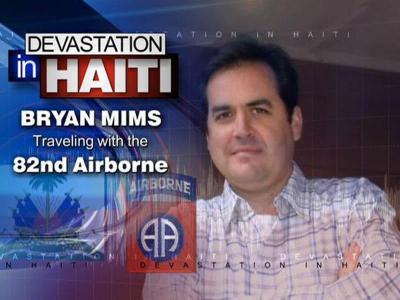Solitudinea si activitatea creierului
O cercetare prezentata in 2009 in cadrul simpozionului “Emotia sociala si creierul”, organizat in America, a aratat legatura dintre activitatea creierului si izolarea sociala. Folosind imagistica cu rezonanta magnetica functionala (fMRI), cercetatorii au demonstrat ca o zona a creierului - striatumul ventral (in mezencefal), care raspunde la stimuli de recompensa, este mult mai activa la persoanele cu comportament pro-social decat la persoanele solitare. Aceasta zona, cu un rol foarte important in invatare, se activeaza la recompense primare (mancarea), secundare (bani) dar si la recompense sociale de genul iubire, incredere, atasament etc.
In cadrul studiului 23 de femei au fost testate pentru a li se masura gradul de solitudine, acestora li s-au aratat atat imagini placute cu oameni fericiti, cat si imagini in care acestia se aflau in mijlocul unor conflicte. Persoanele solitare au raspuns printr-o foarte slaba activitate in striatumul ventral cand le-au fost aratate imaginile placute.
Tinand cont de dorinta de solitudine, se pare ca aceste persoane gasesc confort in lipsa recompenselor sociale.
Studiul sugereza ca solitudinea este influentata de modul in care opereaza creierul. Astfel, slaba activitatea a creierului la prezenta recompensei sociale atrage o slaba implicare in relatiile sociale. Totusi, daca persoanele solitare manifesta dorinta de schimbare a comportamentului social, acest lucru este realizabil deoarece zona responsabila de raspunsul pro-social isi poate schimba forma si structura prin crearea de noi circuite neuronale. Singuratatea compromite sanatatea si poate fi la fel de periculoasa precum fumatul.
Studii anterioare au aratat ca izolarea sociala, sau slaba interactiune interindividuala, este asociata si cu un risc marit de a dezvolta dementa de tip Alzheimer la batranete dar si alte tulburari cognitive.
Intr-un studiu realizat asupra a 823 de persoane cu varste peste 65 de ani, in care s-a analizat relatia dintre singuratate si Alzheimer, participantii au fost supusi unor evaluari care includeau chestionare pentru estimarea singuratatii, clasificarea gradului de dementa sau Alzheimer, si testarea abilitatilor de memorare, invatare si procesare logica. Studiul s-a desfasurat pe parcursul unei perioade de 4 ani.
S-a observat ca riscul de a dezvolta Alzheimer creste proportional cu gradul de solitudine experientiat de fiecare participant in parte.
Cand ai peste 65 de ani, nu este de ajuns sa participi uneori la unele activitati sociale, ci este indicat sa fii implicat si sa aloci zilnic cateva ore de interactiune sociala pentru a evita instalarea tulburarii Alzheimer. Prevalenta dementei de tip Alzheimer creste o data cu inaintarea in varsta si in majoritatea cazurilor este prezenta atrofia cerebrala.
Omul este o creatura sociala care are nevoie de interactiune pentru a-si pastra sanatatea fizica si mintala. Rezultatele studiului sugereaza ca persoanele singure sunt mult mai vulnerabile la efectele vatamatoare ale batranetii.
Persoanele in varsta care reusesc sa se adapteze realitatii prezente, o realitate in care prietenii devin mai putini cu fiecare an ce trece, prezinta o stare de sanatate mai buna decat cei care nu integreaza realitatea obiectiva.
Inca nu se cunoaste care este factorul ce creeaza o legatura intre singuratatea si dementa. (Sursa: Science Daily)
In cadrul studiului 23 de femei au fost testate pentru a li se masura gradul de solitudine, acestora li s-au aratat atat imagini placute cu oameni fericiti, cat si imagini in care acestia se aflau in mijlocul unor conflicte. Persoanele solitare au raspuns printr-o foarte slaba activitate in striatumul ventral cand le-au fost aratate imaginile placute.
Tinand cont de dorinta de solitudine, se pare ca aceste persoane gasesc confort in lipsa recompenselor sociale.
Studiul sugereza ca solitudinea este influentata de modul in care opereaza creierul. Astfel, slaba activitatea a creierului la prezenta recompensei sociale atrage o slaba implicare in relatiile sociale. Totusi, daca persoanele solitare manifesta dorinta de schimbare a comportamentului social, acest lucru este realizabil deoarece zona responsabila de raspunsul pro-social isi poate schimba forma si structura prin crearea de noi circuite neuronale. Singuratatea compromite sanatatea si poate fi la fel de periculoasa precum fumatul.
Studii anterioare au aratat ca izolarea sociala, sau slaba interactiune interindividuala, este asociata si cu un risc marit de a dezvolta dementa de tip Alzheimer la batranete dar si alte tulburari cognitive.
Intr-un studiu realizat asupra a 823 de persoane cu varste peste 65 de ani, in care s-a analizat relatia dintre singuratate si Alzheimer, participantii au fost supusi unor evaluari care includeau chestionare pentru estimarea singuratatii, clasificarea gradului de dementa sau Alzheimer, si testarea abilitatilor de memorare, invatare si procesare logica. Studiul s-a desfasurat pe parcursul unei perioade de 4 ani.
S-a observat ca riscul de a dezvolta Alzheimer creste proportional cu gradul de solitudine experientiat de fiecare participant in parte.
Cand ai peste 65 de ani, nu este de ajuns sa participi uneori la unele activitati sociale, ci este indicat sa fii implicat si sa aloci zilnic cateva ore de interactiune sociala pentru a evita instalarea tulburarii Alzheimer. Prevalenta dementei de tip Alzheimer creste o data cu inaintarea in varsta si in majoritatea cazurilor este prezenta atrofia cerebrala.
Omul este o creatura sociala care are nevoie de interactiune pentru a-si pastra sanatatea fizica si mintala. Rezultatele studiului sugereaza ca persoanele singure sunt mult mai vulnerabile la efectele vatamatoare ale batranetii.
Persoanele in varsta care reusesc sa se adapteze realitatii prezente, o realitate in care prietenii devin mai putini cu fiecare an ce trece, prezinta o stare de sanatate mai buna decat cei care nu integreaza realitatea obiectiva.
Inca nu se cunoaste care este factorul ce creeaza o legatura intre singuratatea si dementa. (Sursa: Science Daily)













